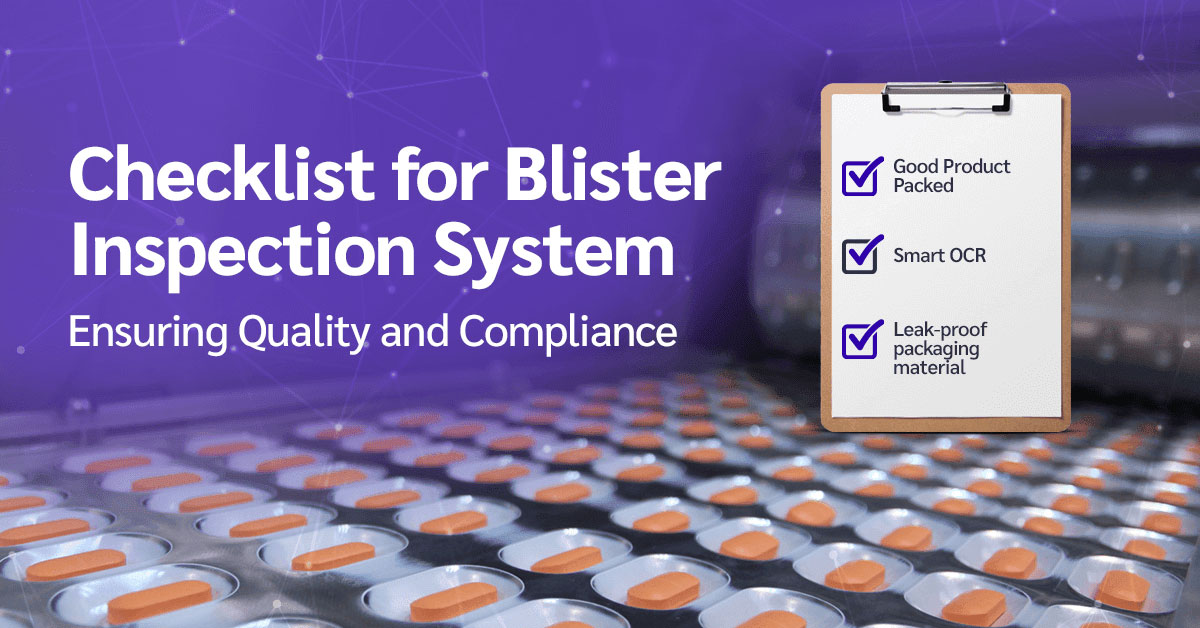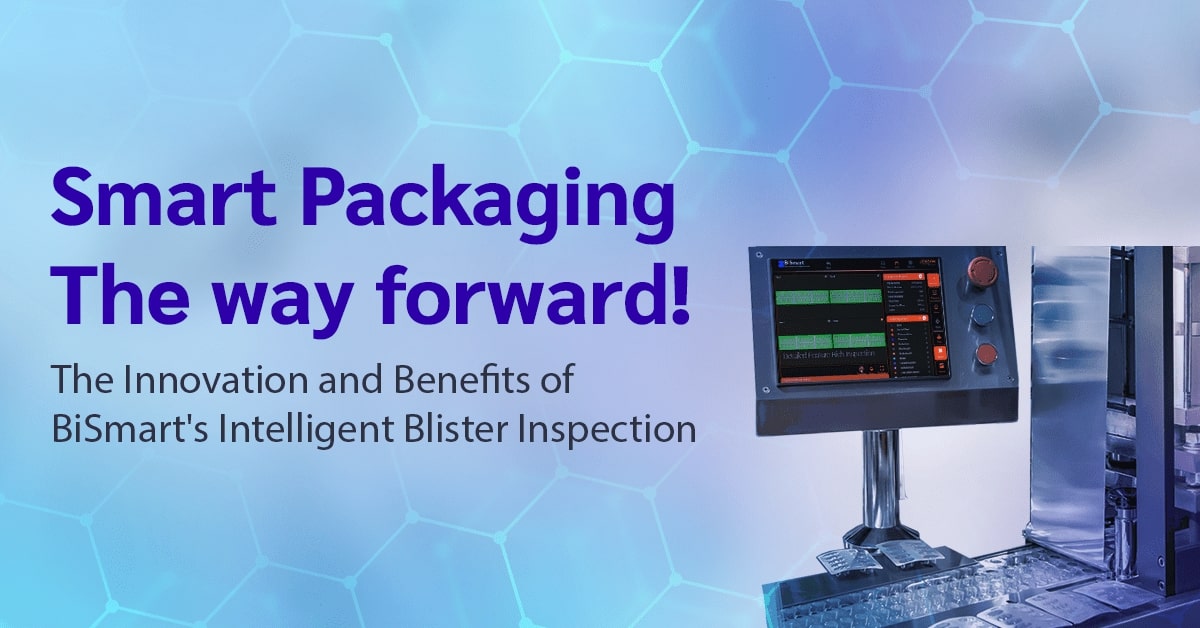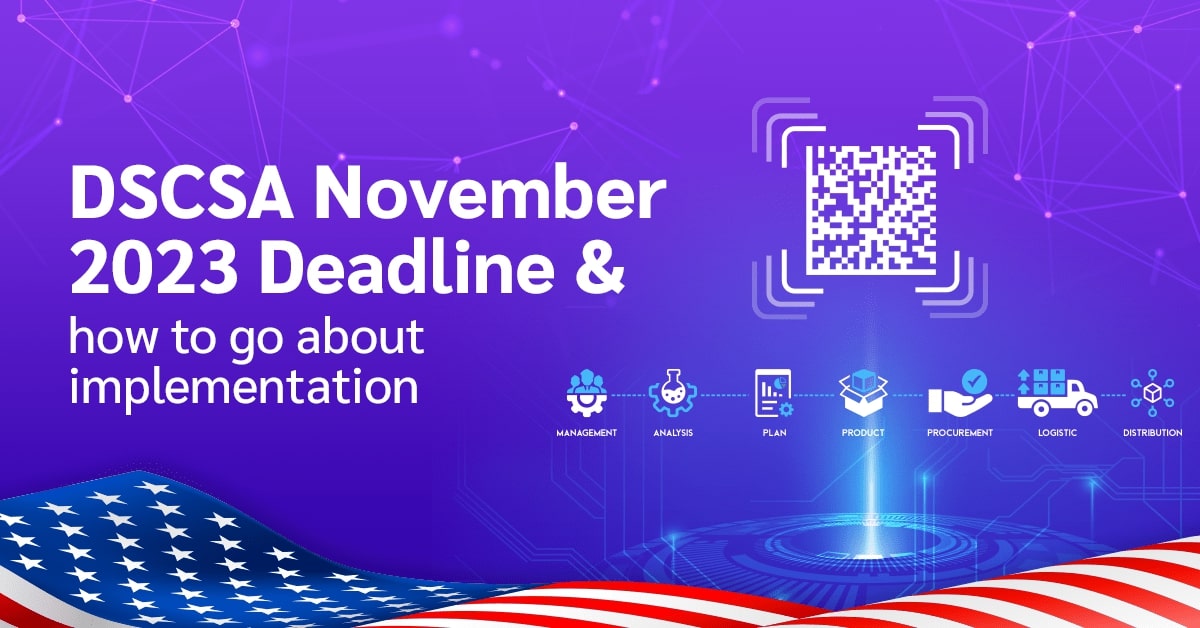In the intricate world of pharmaceuticals, medical devices, and consumer goods, the integrity of packaging stands as a sentinel of quality and assurance.
It’s not merely about aesthetics; it’s about safeguarding product excellence, fortifying brand reputation, and, above all, ensuring the well-being of consumers.
The advent of blister inspection systems has emerged as a technological bastion in this quest for packaging perfection. However, navigating the labyrinth of inspection solutions requires a discerning eye.
To guide businesses on this journey of packaging quality and regulatory compliance, we present an exhaustive checklist for evaluating blister inspection systems, delving beyond mere points to unravel the subtleties that define excellence.
1. Advanced Vision Technologies
In the world of blister inspection, where even the tiniest detail matters, having a keen eye for perfection is crucial. When looking for a blister inspection system, focus on those that embrace these cutting-edge vision technologies:
- High-resolution cameras: Utilizing advanced high-resolution cameras, modern blister inspection systems should capture even the most minuscule defects, ensuring an unparalleled level of accuracy in identifying imperfections.
- Color analysis capability: Look for systems equipped with the capability to analyze color variations in packaging, a feature that allows for the detection of subtle differences that might indicate defects.
- 3D imaging technology: The integration of 3D imaging technology should provide a comprehensive assessment of packaging, guaranteeing that no defect goes unnoticed, even on complex blister designs.
2. Defect Detection and Classification:
When seeking an effective blister inspection system, the ability to spot anomalies becomes a critical factor. Look for systems that possess a sharp eye for detecting irregularities:
- Pinhole detection: A robust system should excel in pinhole detection, identifying micro-sized holes or imperfections that could compromise the product’s integrity.
- Foreign particle detection: The system should be designed to detect foreign particles, preventing any contamination that might occur during the packaging process.
- Precise classification of defects: Beyond detection, a reliable solution should be adept at classifying defects, enabling targeted quality control interventions.
3. Data Analytics and Reporting:
Data is the currency of precision. When navigating the realm of blister inspection systems, directing your focus toward solutions that offer robust data analytics and reporting capabilities is imperative.
Look for systems that seamlessly amalgamate technology and information to provide you with a comprehensive understanding of your production processes.
Here’s what you should prioritize:
- Real-time data analytics: Look for blister inspection systems that provide real-time data analytics, offering insights into defect patterns and production efficiencies.
- Comprehensive reporting tools: The system should generate detailed inspection reports, allowing for thorough analysis and documentation of the inspection process.
- Integration with manufacturing analytics: Integration with manufacturing analytics systems should ensure a holistic quality control approach, facilitating data-driven decision-making.
4. User-Friendly Interface:
Navigating advanced technology doesn’t have to be a daunting task. When evaluating blister inspection systems, prioritize those that seamlessly blend cutting-edge capabilities with ease of use.
Look for systems that offer:
- Intuitive interface: Seek systems featuring an intuitive interface that simplifies system setup, monitoring, and adjustments, ensuring that operators of varying technical backgrounds can efficiently operate the system.
- Interactive visualization: The solution should provide interactive visualization tools that aid operators in defect identification and analysis, enhancing the overall user experience.
5. Integration with Production Line:
An inspection system that dances in sync with the production line is a true asset. An exceptional blister inspection system not only ensures meticulous defect detection but also seamlessly intertwines with the production line, orchestrating a symphony of quality and productivity.
Consider these critical features when assessing a blister inspection solution’s integration capabilities:
- Seamless integration: The blister inspection system should seamlessly integrate with existing production line equipment, minimizing disruption and optimizing production flow.
- Synchronized rejection mechanisms: The system should incorporate synchronized rejection mechanisms, swiftly removing defective products from the production process.
- Feedback loops: Immediate feedback loops should prevent further production of faulty items, ensuring minimal wastage and safeguarding consumer safety.
- Oscilloscope Software: To ensure quality and easy troubleshooting, Jekson System provides real-time monitoring machine integration signal with in-built software Oscilloscope
6. Regulatory Compliance:
In an age of stringent regulations, compliance is non-negotiable. When considering a blister inspection system, one must evaluate its capability to align seamlessly with these regulatory demands.
Look for systems that offer:
- Adherence to industry regulations: A dependable blister inspection system should adhere to stringent industry regulations and standards, ensuring that products meet the highest quality and safety benchmarks.
- Serialization and track-and-trace compatibility: The solution should be designed to seamlessly integrate with serialization and track-and-trace mandates, contributing to regulatory compliance.
7. Customization and Adaptability:
In the realm of blister inspection, where every product packaging is a unique entity, the ability of an inspection system to adapt becomes crucial. The following are key aspects to consider:
- Adjustable inspection parameters: Seek systems that offer the flexibility to adjust inspection parameters to accommodate various blister packaging types, sizes, and materials.
- Customizable settings: The solution should come with customizable settings, allowing for precise tailoring to meet the specific needs of different product lines.
8. Maintenance and Support:
Like a well-oiled machine, the effectiveness of a blister inspection system hinges on its continuous operation. To ensure unwavering performance, keep an eye out for:
- Regular updates and technical support: The provider should offer regular software updates and comprehensive technical support, ensuring that the system operates optimally and efficiently.
- Proactive maintenance services: Maintenance services should be designed to proactively identify and resolve any potential issues, minimizing downtime and ensuring continuous performance.
9. Integration with Quality Control Workflow
An inspection system is a pivotal player in quality control. Look for a blister inspection solution that harmonizes seamlessly with your quality management endeavors:
- Seamless integration with QMS: The blister inspection system should seamlessly integrate with quality management systems, streamlining quality control workflows.
- Collaboration with other inspection equipment: The solution should collaborate effectively with other inspection equipment, such as fillers and labelers, offering a cohesive quality control approach
10. Supplier Reputation and Experience: The Pillars of Trust
Ultimately, it’s about the people behind the technology:
- Reputation and experience: Consider the reputation and experience of the supplier, looking for testimonials, case studies, and industry references that vouch for their reliability and expertise.
Jekson Vision – Uniting Every Element of Excellence
As you embark on the quest for the ideal blister inspection system, remember that each element in this checklist is a building block of assurance. It’s a journey toward safeguarding your products, upholding industry standards, and maintaining the trust of consumers.
In this realm, where precision is paramount and excellence is the norm, Jekson Vision stands as the epitome of perfection. With solutions that embrace each facet of this checklist, Jekson Vision ensures that your packaging quality transcends boundaries.






